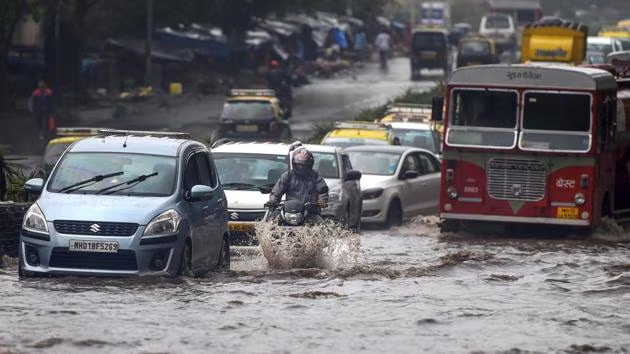Mumbai, India’s financial capital, faces severe challenges during the monsoon season, making it increasingly unlivable. Frequent flooding, flight cancellations, train disruptions, traffic jams, and market shortages disrupt daily life. This report examines the causes and impacts of these issues and discusses the city’s ongoing efforts to mitigate them.
Frequent Flooding
Mumbai’s geographical and infrastructural challenges exacerbate flooding during the monsoons. Heavy rainfall overwhelms the city’s drainage systems, causing significant waterlogging in low-lying areas. For instance, in July 2024, Mumbai recorded over 300 mm of rain within six hours, leading to widespread waterlogging and traffic snarls. The city’s topography, combined with inadequate drainage, contributes to chronic flooding, affecting both rich and poor neighborhoods .
Flight Cancellations
The monsoon season severely impacts air travel in Mumbai. Heavy rains and low visibility often lead to flight cancellations and diversions. During a recent heavy rainfall event, around 50 flights were cancelled, and 27 were diverted from Mumbai’s Chhatrapati Shivaji Maharaj International Airport to other cities like Ahmedabad, Hyderabad, and Indore . These disruptions not only inconvenience passengers but also strain airport operations and logistics.
Train Disruptions
Mumbai’s lifeline, its suburban train network, also suffers during the monsoon. Waterlogged tracks lead to delays and cancellations, disrupting the daily commute of millions of residents. For example, during the same rainfall event in July 2024, several train services were cancelled or delayed due to waterlogged tracks, causing significant inconvenience to commuters . The city’s reliance on its train network means that any disruption has widespread repercussions.
Traffic Jams
Traffic congestion worsens during the monsoon as many roads become impassable due to flooding. Key routes, including highways and arterial roads, experience severe traffic jams as vehicles struggle to navigate waterlogged streets. In July 2024, the Western Express Highway saw heavy traffic due to flooding near Vile Parle, highlighting the impact on daily commuters and emergency services.
Market Shortages
Flooding and transportation disruptions during the monsoon season lead to market shortages. Goods cannot be transported efficiently, resulting in supply chain disruptions. This affects the availability of essential items, leading to price hikes and scarcity in local markets. The compounded effect of flooding, disrupted transport, and market shortages adds to the city’s monsoon woes.
Health Risks
The monsoon season also brings significant health risks. Stagnant water serves as a breeding ground for mosquitoes, increasing the incidence of vector-borne diseases like malaria and dengue. Additionally, floodwaters contaminated with sewage and industrial effluents pose risks of gastroenteritis and other waterborne diseases . Residents in affected areas face heightened health risks, exacerbating the challenges of living in Mumbai during the monsoons.
Mitigation Efforts
Mumbai’s civic authorities have been working to mitigate the impact of monsoon-related disruptions. Efforts include the installation of floodgates, pumping stations, and underground water storage tanks to manage excess rainfall. Additionally, the desilting and unclogging of storm drains and rivers are ongoing to improve water flow and reduce flooding Despite these efforts, the city’s dense development and inadequate infrastructure continue to pose significant challenges.
Climate Change and Future Risks
Climate change exacerbates Mumbai’s monsoon challenges. Increased atmospheric moisture and rising sea temperatures contribute to more frequent and intense rainfall events. Moreover, the city’s coastal location makes it vulnerable to rising sea levels and cyclones, which are expected to increase in frequency and intensity (The Atlantic). Long-term climate adaptation plans are essential to address these challenges and make Mumbai more resilient to future monsoon seasons.
Conclusion
Mumbai’s monsoon season presents a myriad of challenges, making the city increasingly unlivable during this period. Frequent flooding, transportation disruptions, market shortages, and health risks are significant concerns. While mitigation efforts are underway, comprehensive climate adaptation strategies are crucial to address the underlying causes and improve the city’s resilience. The need for robust infrastructure and effective disaster management plans is more pressing than ever as Mumbai grapples with the impacts of climate change.





